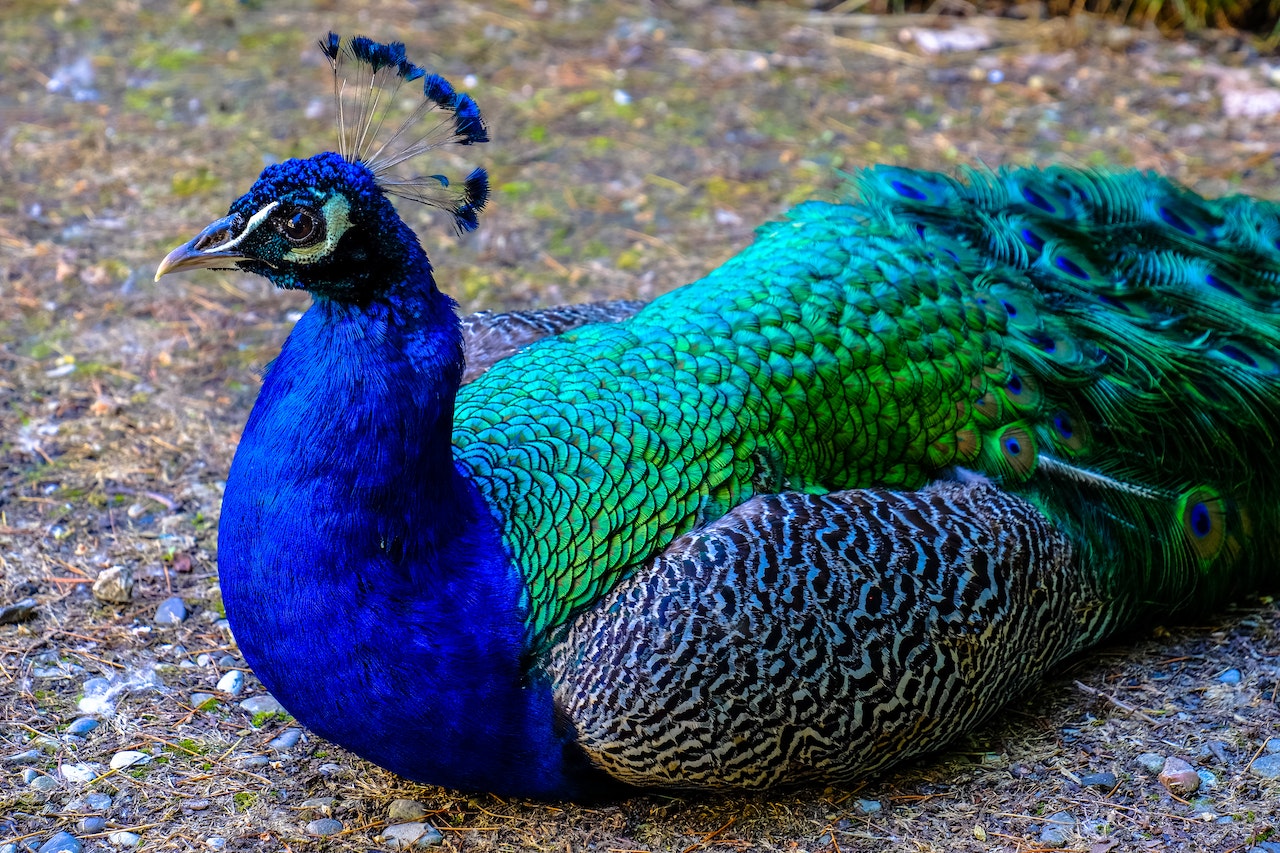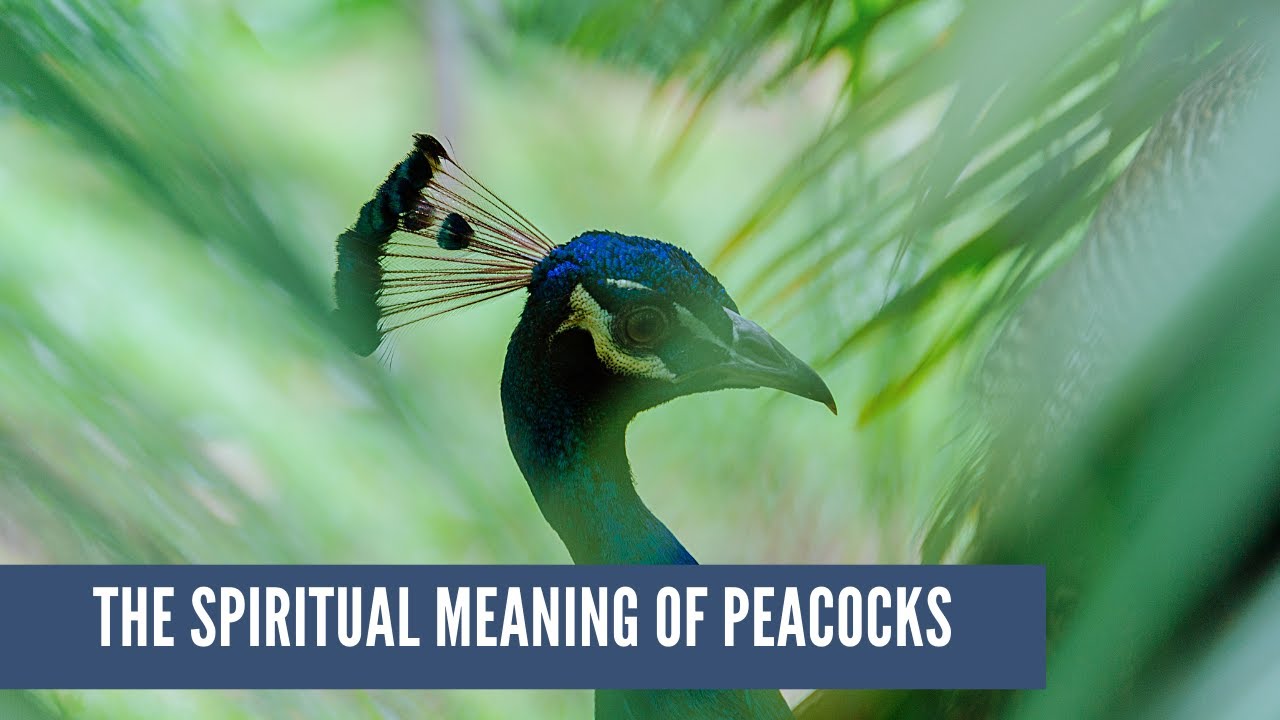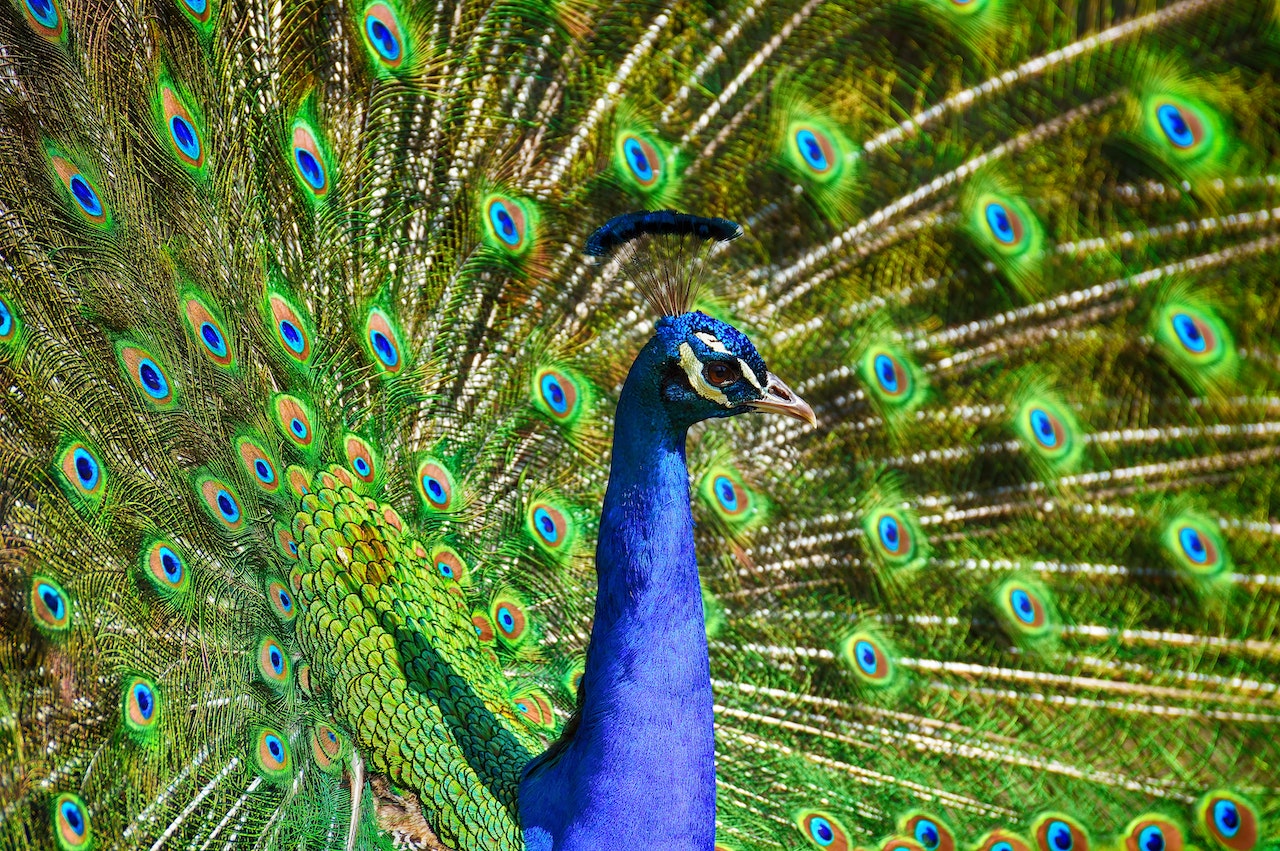Peacock Spiritual Meaning, Symbolism, Mythology, And Significance
From ancient mythology to modern-day beliefs, the peacock has been associated with a wide range of symbolic interpretations. In this article, we will explore the peacock spiritual meaning in different cultures and traditions.
Author:Georgia AshcroftReviewer:Ava MartinezMay 22, 202327.2K Shares373.8K Views

Peacock is a stunningly beautiful bird known for its striking plumage and vibrant colors. In many cultures, peacocks are considered sacred and hold significant spiritual meaning.
From ancient mythology to modern-day beliefs, the peacock has been associated with a wide range of symbolic interpretations. In this article, we will explore the peacock spiritual meaningin different cultures and traditions.
Peacock Spiritual Meaning And Symbolism In Christianity
In Christianity, the peacock has long been associated with resurrection and renewal. One of the most popular beliefs surrounding the peacock is that it sheds its feathers every year and grows new ones, representing the cycle of death and rebirth.
This cycle of renewal is seen as a powerful symbol of the resurrection of Christ and the eternal life that is promised to all believers.
The peacock's stunning feathers are also seen as a symbol of the glory of God. Just as the peacock proudly displays its feathers, Christiansare called to display the glory of God through their lives and actions.
The bird's vibrant colors are a reminder of the beauty and majesty of God's creation, and of the heavenly rewards that await believers.
In Christian art, the peacock is often depicted standing on a serpent, symbolizing the victory of Christ over evil and death. The serpent is a powerful symbol of temptation and sin, and the peacock's triumph over it represents the triumph of good over evil.
This image of the peacock standing on a serpent can be seen in many works of art throughout the Christian world, from ancient mosaics to medieval manuscripts.
The Peacock's Symbolism Of Watchfulness And Vigilance In Christianity
In addition to its symbolism of resurrection and renewal, the peacock is also associated with watchfulness and vigilance in Christianity.
According to Christian legend, the peacock has 100 eyes, which it uses to watch over its surroundings and protect itself from danger.
This image of the peacock as a watchful and vigilant creature is often used in Christian art to symbolize the need for believers to remain alert and watchful in the face of temptation and danger.
Christians are called to be vigilant in their faith, to keep watch over their thoughts and actions, and to guard against the dangers of sin and temptation.
In some Christian traditions, the peacock is also associated with the concept of divine providence. Just as the peacock watches over its surroundings and protects itself from danger, so too does God watch over his people and protect them from harm.
This image of the peacock as a symbol of divine providence can be seen in many Christian works of art, from ancient mosaics to Renaissance paintings.
The Peacock's Symbolism Of Pride And Vanity In Christianity
While the peacock is generally seen as a symbol of beauty and elegance, it is also associated with pride and vanity in some Christian traditions.
The bird's habit of preening and displaying its feathers can be seen as a symbol of vanity and self-importance, and as a warning against the dangers of pride.
In Christian art, the peacock is sometimes depicted with a serpent or dragon at its feet, representing the dangers of pride and the need to remain humble before God.
This image of the peacock as a symbol of pride and vanity can be seen as a cautionary tale for Christians, reminding them to remain humble in the face of God's greatness and to avoid the pitfalls of pride and self-importance.
Peacock Symbolism In Modern Culture
In modern culture, the peacock continues to be a popular symbol of beauty and elegance. It's striking feathers and regal appearance make it a popular subject in art, fashion, and design.
The peacock's iridescent colors have also inspired a range of makeup and fashion trends, with shades of blue, green, and purple often used in eye makeup and clothing.
In popular culture, the peacock has been used as a symbol of luxury and sophistication. Companies like NBC Universal and Peacock TV have used the bird's image as their logo, evoking a sense of elegance and style.
The peacock has also been featured in a range of movies, TV shows, and advertisements, where it is often used to represent beauty, grace, and refinement.
The Peacock's Symbolism Of Confidence And Self-Assurance In Modern Culture
In addition to its symbolism of beauty and elegance, the peacock is also associated with confidence and self-assurance in modern culture. The bird's habit of displaying its feathers is seen as a sign of pride and self-confidence, and it is often used as a symbol of strength and resilience.
In popular culture, the peacock is often featured in motivational and self-help literature, where it is used as a symbol of the power of positive thinking.
The bird's confident and assertive behavior is seen as a model for people who want to overcome their fears and insecurities and become more self-assured and successful.
The Peacock's Symbolism Of Multifaceted Personality In Modern Culture
The peacock's colorful and multifaceted personality also makes it a popular symbol in modern culture. It's iridescent feathers and striking appearance make it a popular subject in art and design, while its complex personality has inspired a range of literary and artistic works.
In popular culture, the peacock is often used as a symbol of the complexity of human nature. Its ability to display a range of emotions and personalities, from pride and self-assurance to vulnerability and sensitivity, makes it a popular symbol for artists and writers who want to explore the complexities of the human psyche.
The Peacock's Symbolism Of Diversity And Inclusivity In Modern Culture
In recent years, the peacock has also become a symbol of diversity and inclusivity in modern culture.
Its vibrant colors and unique appearance make it a popular symbol for people who want to celebrate individuality and difference.
In the LGBTQ+ community, the peacock is often used as a symbol of diversity and inclusivity, with its colorful feathers representing the wide range of identities and experiences within the community.
The peacock has also been featured in a range of pride events and celebrations, where it is used as a symbol of acceptance and love for all people, regardless of their differences.
Peacock Symbolism In Hinduism
In Hinduism, the peacock is considered a sacred bird and is associated with various gods and goddesses. The bird's majestic appearance, with its vibrant colors and striking feathers, is seen as a symbol of divine beauty and grace.
One of the most well-known deities associated with the peacock is Lord Murugan, the Hindu god of war and victory. Lord Murugan is often depicted riding on a peacock, which is seen as a symbol of his power and strength.
The peacock is also associated with the goddess Saraswati, the Hindu goddess of knowledge and learning. In some depictions, Saraswati is shown seated on a peacock, which is seen as a symbol of her wisdom and intelligence.

Peacock Spirit Animal | Peacock Spiritual Meanings and Symbols | @spiritanimal #peacock
The Peacock's Symbolism Of Renewal And Rebirth In Hinduism
In Hindu mythology, the peacock is also associated with renewal and rebirth. The bird's ability to shed its feathers and regrow them each year is seen as a symbol of the cyclical nature of life and the eternal cycle of death and rebirth.
The peacock's feathers are also seen as a symbol of renewal and transformation. In Hinduism, it is believed that feathers have the power to absorb negative energy and protect against evil forces. The feathers are often used in spiritual rituals and ceremonies to promote healing and renewal.
The Peacock's Symbolism Of Protection And Guidance In Hinduism
In addition to its associations with beauty and renewal, the peacock is also seen as a symbol of protection and guidance in Hinduism. The bird's feathers are believed to have the power to ward off evil and protect against harm.
The peacock is also seen as a symbol of guidance and wisdom. In Hindu mythology, the bird is sometimes depicted as the vehicle of the god Kartikeya, who is associated with knowledge and wisdom.
The peacock's ability to see in all directions and its keen sense of awareness is seen as a symbol of the god's wisdom and guidance.
The Peacock's Symbolism Of Love And Devotion In Hinduism
The peacock is also associated with love and devotion in Hinduism. In some depictions, the bird is shown offering its feathers to the divine, a symbol of the devotee's surrender and devotion to the divine.
The peacock is also associated with the god Krishna, who is often depicted wearing a peacock feather in his hair. The feather is seen as a symbol of Krishna's playful and mischievous nature, as well as his love for his devotees.
In Hinduism, the peacock's beauty and grace are seen as a reminder of the divine's love and affection for all beings.
Peacock Symbolism In Greek Mythology
In Greek mythology, the peacock has its own origin story. According to the myth, the peacock was created from the tears of the goddess Hera.
Hera was known for her jealousy and anger towards her husband Zeus, and when he had an affair with a mortal woman, Hera wept tears of sorrow and rage. From these tears, the peacock was said to have been born.
The Peacock's Symbolism Of Immortality And Renewal In Greek Mythology
In Greek mythology, the peacock is often associated with immortality and renewal. This is due to the belief that the bird's feathers never fade or decay, symbolizing the eternal nature of life.
The peacock is also associated with the goddess Hera, who is often depicted wearing a crown of peacock feathers. This crown is seen as a symbol of Hera's immortality and power. Additionally, the peacock is sometimes shown in depictions of the goddess Eileithyia, the Greek goddess of childbirth and renewal.
The Peacock's Symbolism Of Protection And Watchfulness In Greek Mythology
In Greek mythology, the peacock is also associated with protection and watchfulness. The bird's keen eyesight and ability to see in all directions are seen as a symbol of its watchful nature, making it a protector against evil forces.
In some depictions, the peacock is shown accompanying the goddess Hera, acting as her guardian and protector. The bird's feathers are also believed to have the power to protect against evil and harm.
The Peacock's Symbolism Of Beauty And Pride In Greek Mythology
In addition to its associations with immortality and protection, the peacock is also seen as a symbol of beauty and pride in Greek mythology. The bird's striking appearance and vibrant colors are seen as a symbol of its beauty and grace.
The peacock is often depicted as a proud and regal creature, reflecting its association with pride and self-importance. In some myths, the bird's pride is seen as a flaw, leading to its downfall.
The Peacock's Symbolism Of Royalty And Nobility In Greek Mythology
In Greek mythology, the peacock is also associated with royalty and nobility. The bird's regal appearance and majestic feathers are seen as a symbol of its status as a noble creature.
The peacock is sometimes depicted in the company of royalty, such as the god Apollo or the goddess Athena. The bird's association with nobility and royalty is also reflected in its depiction in art and architecture throughout Greek history.
People Also Ask
What Is The Peacock's Spiritual Meaning In Chinese Culture?
In Chinese culture, the peacock is often associated with dignity, beauty, and peace.
How Is The Peacock Viewed In Native American Spirituality?
In Native American spirituality, the peacock is seen as a symbol of abundance, protection, and awareness.
What Is The Peacock's Significance In Buddhism?
How Does The Peacock Symbolize Love And Romance In Literature?
In literature, the peacock is often used as a symbol of love and romance, representing the pursuit of beauty and pleasure.
What Is The Peacock's Spiritual Meaning In Egyptian Mythology?
In Egyptian mythology, the peacock is associated with the goddess Isis and is seen as a symbol of rebirth and regeneration.
Conclusion
The peacock has a rich and diverse symbolism across various cultures and mythologies. Peacock spiritual meaning is often associated with qualities such as beauty, immortality, renewal, protection, watchfulness, pride, and nobility.
Whether it is the peacock's connection to the divine in Hinduism, its representation of resurrection and spiritual awakeningin Christianity, or its association with the goddess Hera in Greek mythology, the peacock remains a significant symbol with deep spiritual significance.
The peacock's vibrant colors and striking appearance continue to capture our imagination, reminding us of the profound beauty and mystery of the natural world, and its spiritual significance as a symbol of divine grace and transcendence.

Georgia Ashcroft
Author
Georgia Ashcroft is a seasoned astrologer and spiritual practitioner with over 5 years of experience. She holds a Master's degree in Physics from Princeton University, enriching her astrological insights with a deep understanding of scientific principles.
Georgia's published works encompass insightful analyses of astrological phenomena, including zodiac signs and horoscope interpretations, establishing her as an esteemed figure in astrological circles.
Beyond astrology, Georgia is passionate about tarot and regularly incorporates its wisdom into her spiritual practice.

Ava Martinez
Reviewer
Ava Martinez is a highly experienced author specializing in spirituality and tarot. With over 12 years of dedicated practice, Ava brings a wealth of experience and expertise to her writings.
She has dedicated herself to helping individuals gain insight and clarity through spiritual practices and tarot consultations.
Her deep connection to spiritual energies and engaging style make her readings a trusted resource for those seeking guidance and enlightenment.
Apart from her literary world, Ava embraces nature's gifts, explores meditation's depths, and intertwines the mystical essence of spells into her holistic perspective on life's journey.
Latest Articles
Popular Articles
